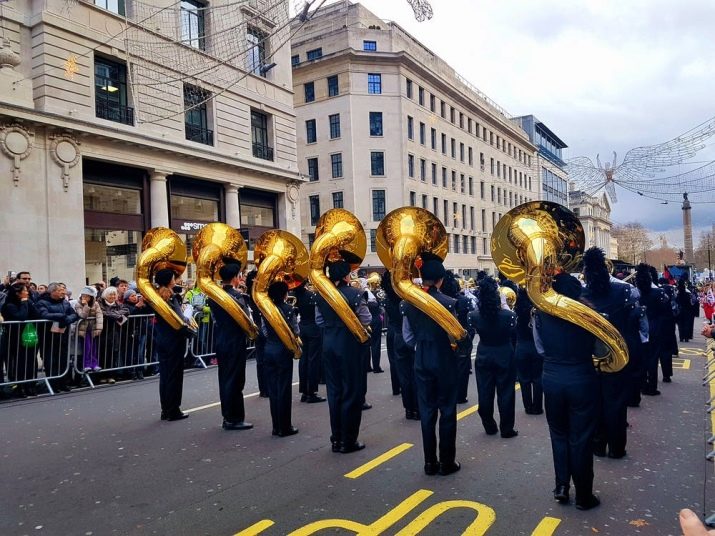Sousaphone: characteristics and use

The article provides a general description and description of the use of the sousaphone. The history of the creation of this musical wind instrument is given and it is indicated where it is used in practice.

History of appearance
Like many things in modern life, the sousaphone had a predecessor. It was the helicon instrument, which was readily used in the orchestra of the United States Marine Corps. It is not difficult to distinguish between helicon and sousaphone - the early device has a smaller overall cross-section, the bell is also smaller in size. The sousaphone got its name in honor of the composer and at the same time the bandmaster named John Sousa, who decided to improve the previous sample.
Two tasks were set: to lighten the instrument and to make the sound seem to fly over the orchestra.

But besides Susa, other people also worked on it. So, in 1893 his plan was realized by another composer, James Pepper. The work also did not stop there - after another 5 years, Charles Conn entered the business. It is he who is credited with presenting the sousaphone in the form in which this instrument is now known. And it was under the leadership of Conn that the first company started to commercialize it.

Description
Sousaphone is a wind instrument containing valves. In terms of its acoustic niche in an orchestra, it roughly corresponds to a tuba. During the concert, the bell should be raised above the head. Structurally, the product is very close to typical vertical pipes. The maximum load falls on the shoulder.

Since the instrument is very carefully designed, its position is quite comfortable and allows you to play confidently even when moving. The detachable socket allows you to make the sousaphone more compact than other instruments. The valves are located above the waist, directly in front of the musician.The tool weighs 10 kg and its length is 5 m.
Despite the good construction, transportation and carrying are sometimes difficult.

As already mentioned, there are almost no changes compared to the products of the times of Susa, Pepper and Konn. However, one adjustment still had to be made. Initially, the upward-oriented bell was disliked by the musicians and even gave it the nickname "rain collector" or "drainpipe".

In response to this opinion, manufacturers preferred to produce modernized sousaphones. Now the bell goes a little forward. He also had clear standardized sizes. They are 650 mm (in English tradition - 26 inches).

Important features of the sousaphone:
-
very elegant appearance;
-
traditional production from brass or sheet copper (which causes, respectively, yellow or silver color);
-
decoration of individual parts with silver plating and gilding, in other cases - the use of beautiful varnish;
-
the location of the bell is almost completely open to viewers.

Some manufacturers deliberately refuse to use metal structures as much as possible. Therefore, there are also sousaphones made of fiberglass on the market. They are not inferior to traditional modifications in terms of sound quality. This provides:
-
longer time of operation;
-
relief of the instrument itself;
-
decrease in its value.

Where is it used?
Sousaphones in ordinary concert activity - both on stage and in jazz groups - are not very common. For this, they are still unnecessarily heavy and cumbersome. Even the latest fiberglass versions are considered by many musicians to be just a compromise, still less convenient than traditional wind instruments. Sousaphone is not easy to play; mostly seen at a symphony orchestra or a military parade.
They try to place the strongest and most enduring musicians in the corresponding concert positions.

The range and fingering of the sound, as already mentioned, are the same as for the trumpets. The valves are in front of the musician. Brass band members can play the sousaphone both on the spot and on the go. Unlike a pipe, there is no need to use special belts to compensate for weight loads. The large size of the bell, looking at the viewer, can be occupied by the name or a special logo of the orchestra.

In Russia, the sousaphone is used by jazzmen more often than in other countries, and yet it is rather a typical military instrument.









